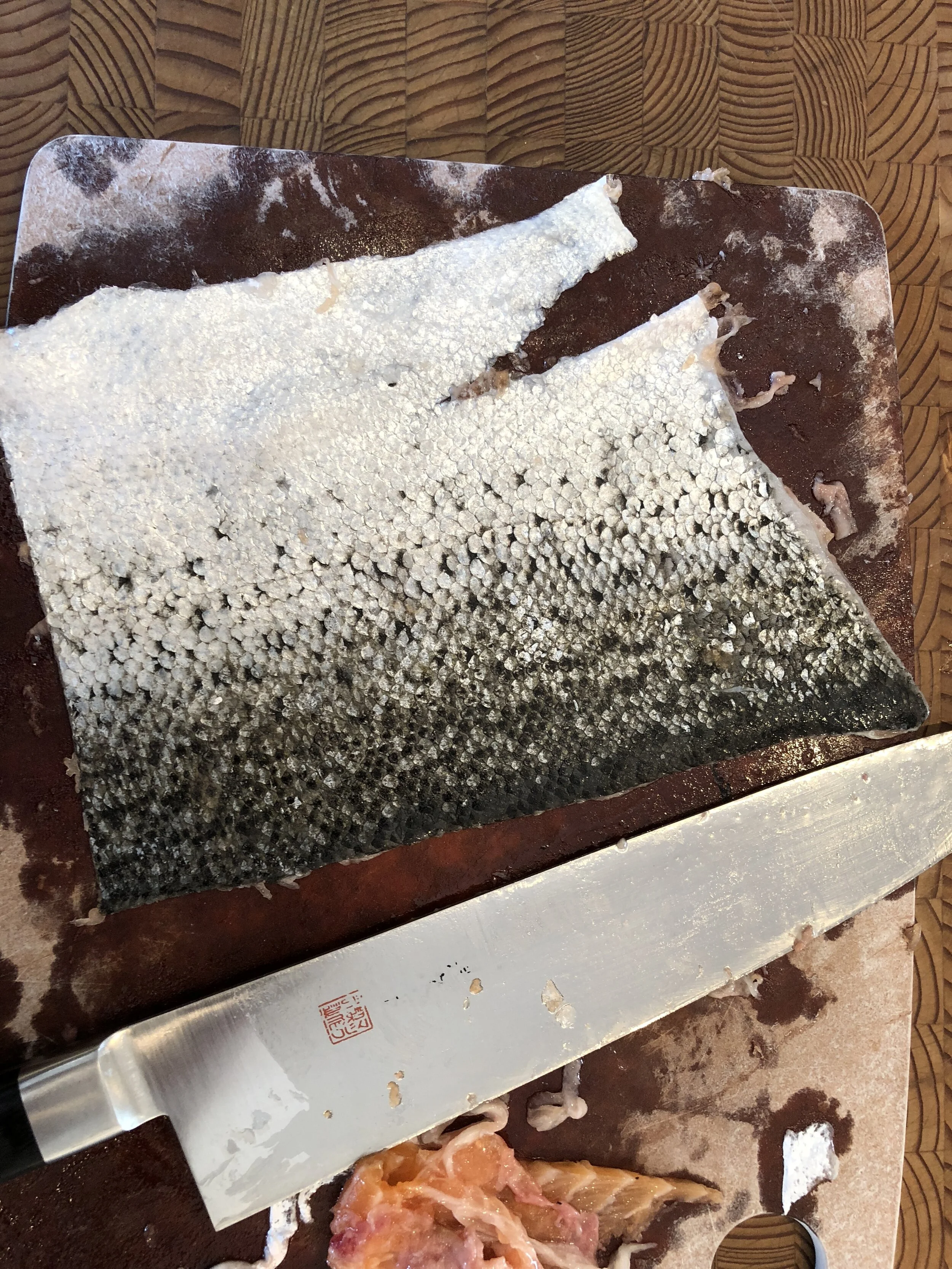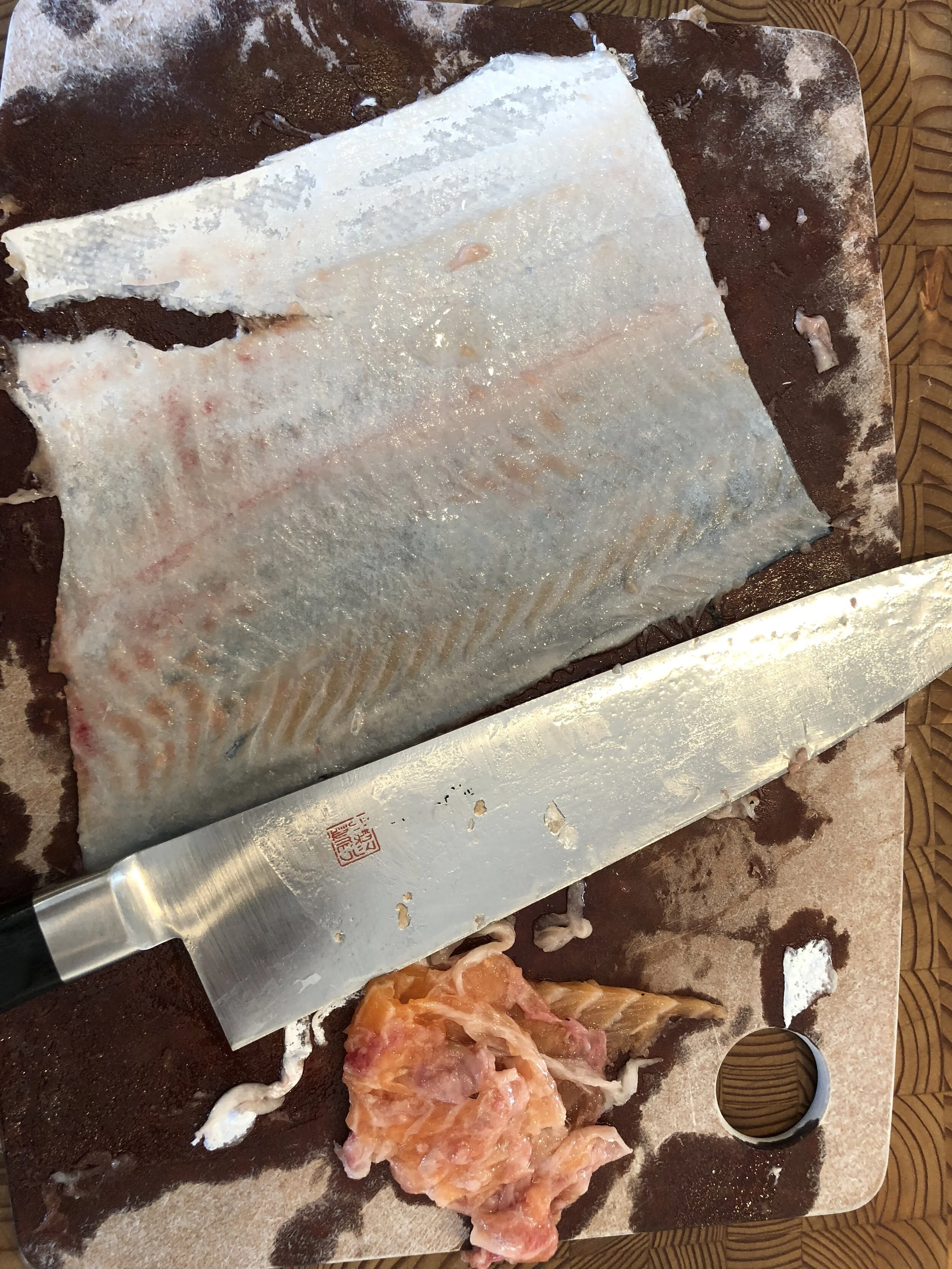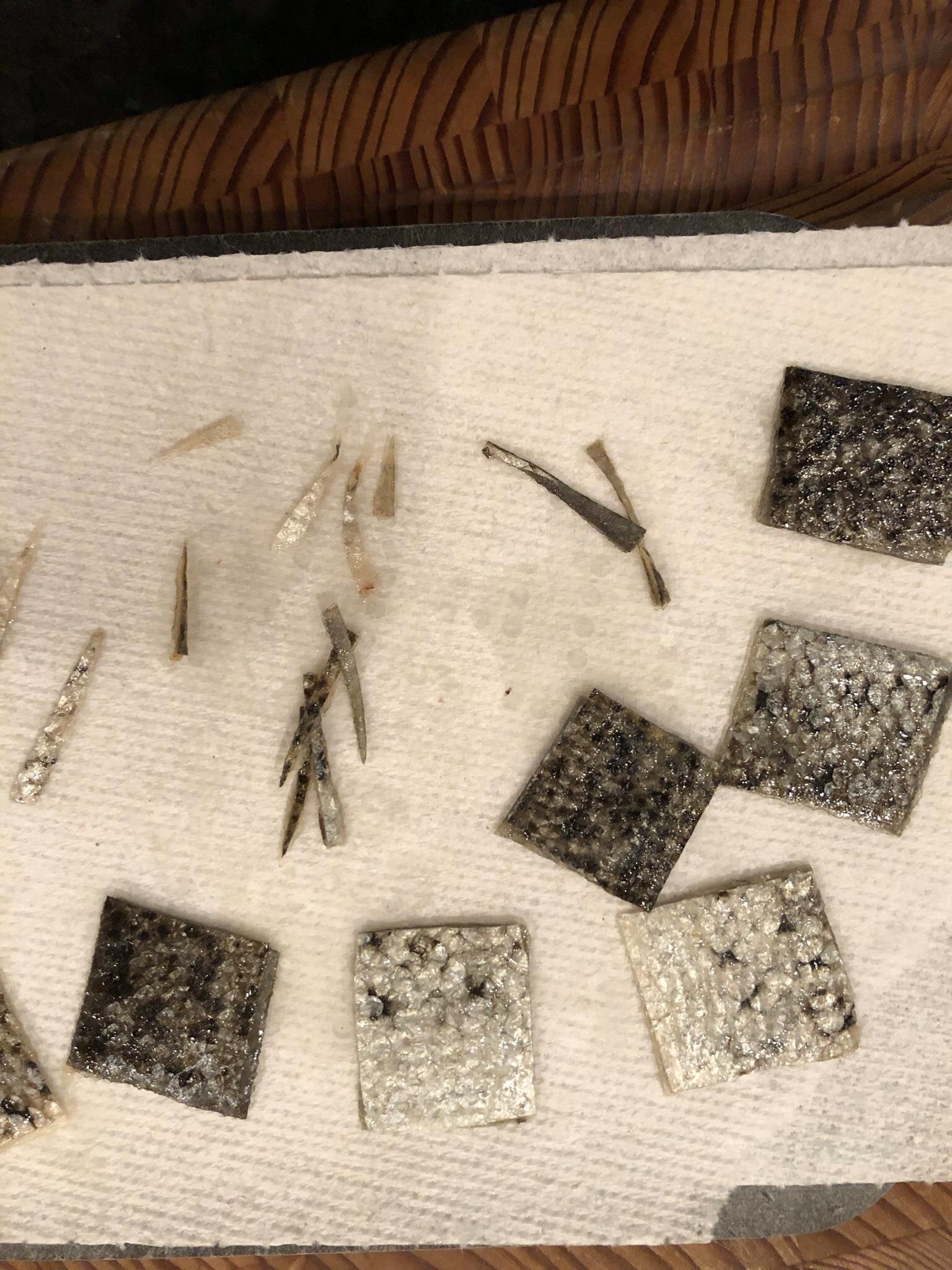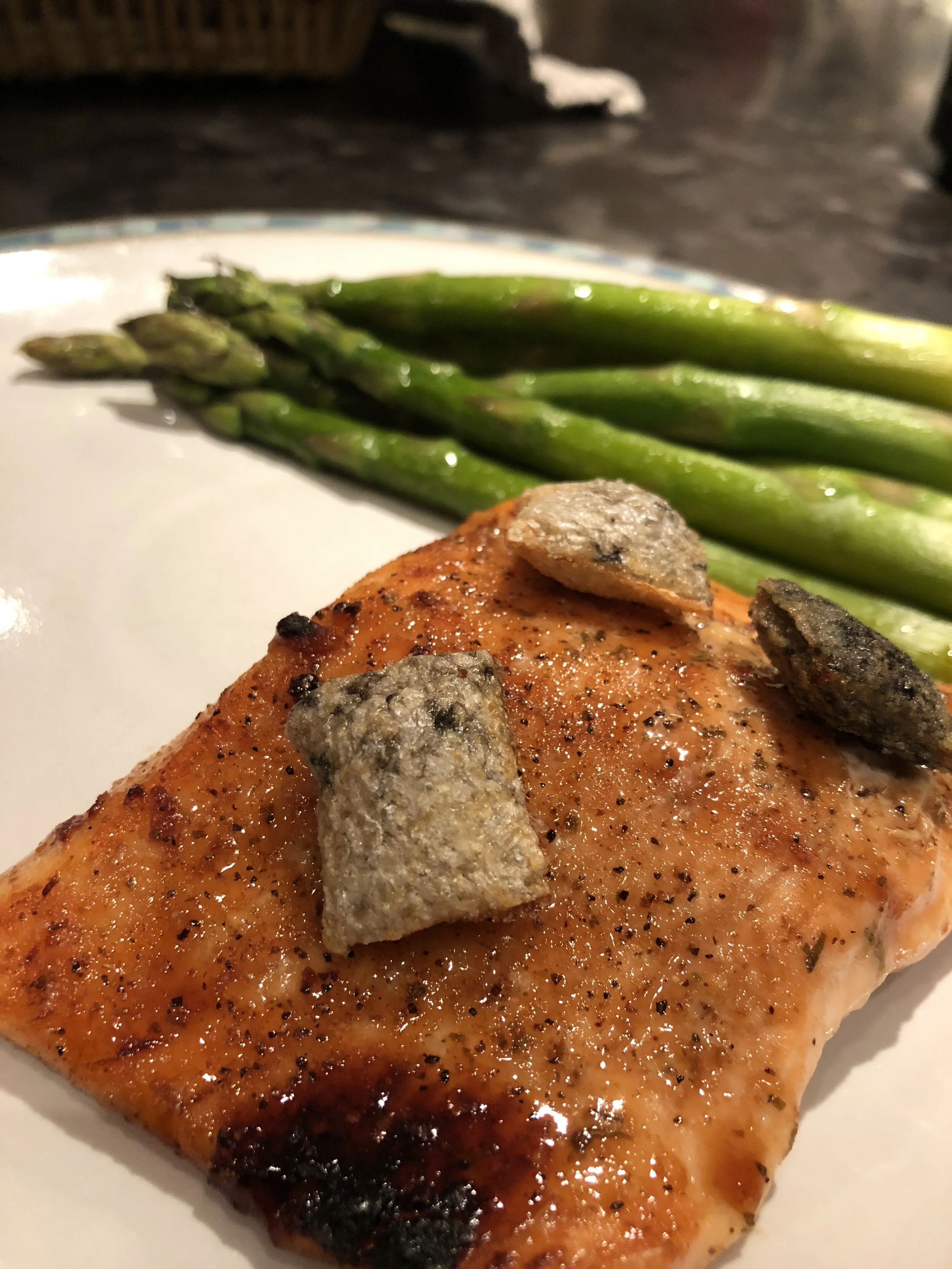Fish Skin
Those familiar with sous vide will know that it has a major drawback: producing the Maillard reaction and crispy skin. Where this is most evident is in cooking fish. On removing the fillet from the bag, while the flesh is perfectly cooked, the skin is moist and unappetizing. Work arounds are to simply remove the skin and just serve the fillet (easily accomplished after cooking, much more so than skinning a raw fillet) or attempting to crisp the skin after cooking. The latter can be accomplished by a quick pan sear or using a blow torch. Neither however is ideal as the fish skin is very moist and one runs the risk of overcooking the perfectly cooked fillet to sufficiently crisp the skin. Another option is to skin the fish before cooking and cook separately. One could just deep fry it, but I like to bake it; just salt the skin, lay the skin flat between two baking sheets lined with parchment paper, and crisp the skin in the oven. Think potato chip made from fish skin!
Before describing another novel technique, some background information. Fish skin, indeed all skin is comprised of the interweaving of helical collagen fibres. If not cooked, it is rubbery and tough; after all, its purpose is to protect underlying tissue. However, with sufficient heat from cooking, the collagen coils unwind and break into smaller segments, ie they “hydrolyse”, becoming tender enough to eat, and with the high heat, crispy. As noted, the trick is to do this without overcooking the meat / fish. Alternatively, instead of using high heat, one can use moderate heat, if there is lots of moisture, and you have lots of time! Sous vide is an ideal technique for this. The skin removed from the fish is placed in a bag and vacuum packed which keeps it moist during the cooking process. It can then be cooked for hours at the ideal temperature. Unfortunately, we are back where we started though; perfectly cooked skin which still needs to be crisped.
Enter H. Alexander Talbot and Aki Kamozawa, authors of the food blog “Ideas in Food”. They described a brilliant technique in which they make fish skin pillows. I came across the recipe in Modernist Cuisine Vol. 5 and had to try it. Skin is removed from salmon fillets, the fish kept until it is to be cooked later, and the skin cooked sous vide at 85°C / 185°F for 3 hours. It is then cooled, dried and cut into 3.5 cm / 1.5” squares. A slurry of Aptiva, ie transglutaminase (aka meat glue - see “Scallop Prosciutto Sandwich, Butternut Squash & Watercress Purée” and “Meat Glue Redux”) is applied around the edges, and two pieces sandwiched together to seal. These flat pillows are then vacuumed packed to compress and hold the two sides together. They need to be refrigerated for at least 6 hours for the edges to bond. The pillows are then deep-fried last minute which vaporizes moisture within the pillow puffing them just like pomme soufflée (see "Pommes Soufflée: v 1.0”) creating a lovely delicate yet crisp textural element to accompany the fish which is cooked on its own to perfection!
Next time I would like to inject the pillows with some other elements. If you have an idea for what to put in them e.g. herbs, a foam, etc., let me know!
Fish skin removed from salmon fillet.
Fish skin scraped clean.
The sandwiched squares of salmon skin are compressed by vacuum packing. To allow the transglutaminase to fully bond the edges together, the skin is refrigerated 6 hours.
Squares removed and trimmed readied to be deep fried at time of serving.
Puffed skin pillows served with salmon fillet. The salmon was sous vided at 54°C, way too low to crisp skin, but perfect to my likeing for the salmon. The fillet was then sprinkled with BC Salmon Rub and placed under the broiler. As you can see, one edge of fish browned a little to much. However, the pillows were perfectly crisp and airy, a delicious accompaniment.




